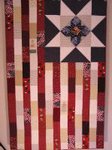Updated 3/2017 -- all links (except to my own posts) removed as many no longer active.
As more women turn to postmastectomy breast reconstruction, surgeons are beginning to look at outcomes. Not simply safety and complications, but also patient satisfaction.
A recent March 2010 article in the Journal of Plastic and Reconstructive Surgery (full reference below) looked patient satisfaction among women who had reconstruction using implants.
The authors note that research in this field has been “hindered by the absence of an outcomes measure for use in evaluation of patient satisfaction and health-related quality of life (HRQoL).”
The BREAST-Q is a new questionnaire that specifically measures postsurgical body image and quality of life in the breast reconstruction patient. The European Organization for Research and Treatment of Cancer Quality of Life Questionnaire C30 (Br23) [EORTC QLQC30 (Br23)] is a cancer-specific questionnaire that incorporates a breast-specific module and measures overall functioning following breast cancer treatment.
This study used these two questionnaires to evaluate patient satisfaction and health-related quality of life following alloplastic (implant) breast reconstruction and more specifically if the type of implant used (saline versus silicone) has an effect on health-related quality of life.
A chart review of University of British Columbia patients was performed, compiling data on the following demographic features: type of breast cancer, unilateral versus bilateral reconstruction, history of radiation or chemotherapy, complications, type of implant, follow-up time, age at second stage, timing of reconstruction, and comorbidities.
A total of 280 patients were identified. Sixteen patients were deceased and 17 patients had noncurrent addresses (neither responders nor nonresponders). Out of the 247 “active” charts, there were 75 silicone implant recipients and 68 saline implant recipients who responded (an overall response rate of 58 %). Chart review was possible for 100 of the 104 nonresponders.
In this patient population, responses to the BREAST-Q indicated a statistically significant higher overall satisfaction with breast reconstruction, higher psychological well-being, higher sexual well-being, and higher satisfaction with surgeon for silicone implant recipients. This finding was maintained after adjusting for variables that differed between groups. In addition, radiation exposure and unilateral versus bilateral reconstruction were included in the regression analysis, as these variables were felt a priori to influence overall satisfaction with outcome.
…………….
Results using the EORTC QLQC30 showed no statistically significant difference on any subscale, with the exception of higher overall physical function in silicone patients and higher systemic therapy side effects in saline patients. This is a cancer-specific questionnaire that examines function and symptom severity in cancer patients. In general, condition-specific measures allow greater responsiveness to intervention-related change compared with generic outcomes measures.
The BREAST-Q was developed at the Memorial Sloan Kettering Cancer Center and the University of British Columbia. This instrument measures health-related quality of life following breast surgery. The module used in this study was specific to breast reconstruction. This instrument encompasses six scales: (1) psychosocial well-being, (2) physical well-being, (3) sexual well-being, (4) satisfaction with breasts, (5) satisfaction with outcome, and (6) satisfaction with care.
The EORTC QLQC30 (Br23) was developed by the European Organization for Research and Treatment of Cancer at the Netherlands Cancer Institute. This instrument evaluates health-related quality of life in cancer patients. The QLQC30 module incorporates nine scales (five functional, three symptom, and one global health-related quality of life).
The authors drew these conclusions:
Responses on a surgery-specific instrument show silicone recipients to have overall higher satisfaction with the reconstructed breast(s). After adjusting for age, follow-up time, radiation therapy, and unilateral versus bilateral surgery, silicone recipients scored an average of 64 points for overall satisfaction with breast while saline patients scored 57 points. Similar results were seen for sexual well-being, psychological well-being, and overall satisfaction with surgeon.
Findings using the EORTC-QLQC30 revealed no statistically significant difference in overall global health status. Thus, it may be concluded that increased satisfaction in silicone implant recipients found using the BREAST-Q is not equivalent to increased overall global health as measured by the EORTC-QLQC30. The findings of this study provide reliable data that will allow surgeons to adequately inform their patients preoperatively regarding the expected outcomes of breast reconstruction using silicone and saline implants.
REFERENCE
Patient Satisfaction and health-Related Quality of Life following Breast Reconstruction: Patient-Reported Outcomes among Saline and Silicone Implant Recipients; Macadam, Sheina A.; Ho, Adelyn L.; Cook, E. F. Jr; Lennox, Peter A.; Pusic, Andrea L.; Plastic and Reconstructive Surgery. 125(3):761-771, March 2010; doi: 10.1097/PRS.0b013e3181cb5cf8






